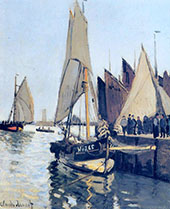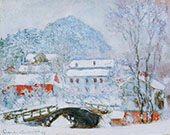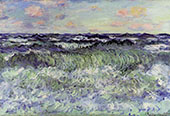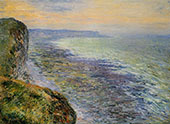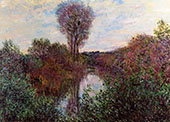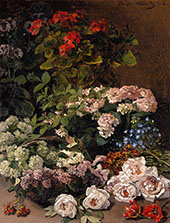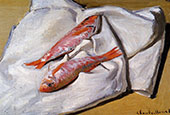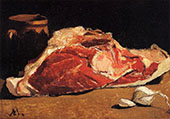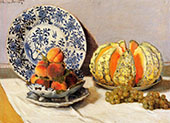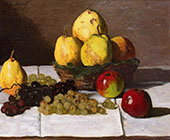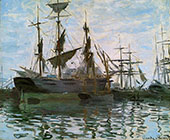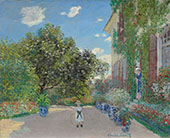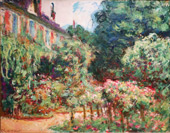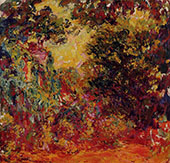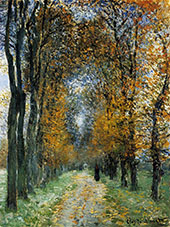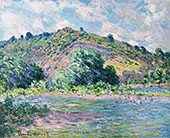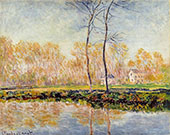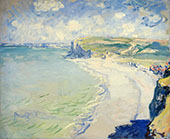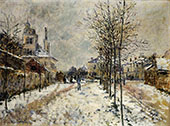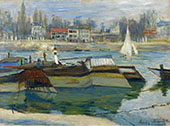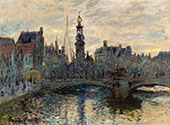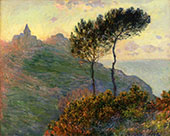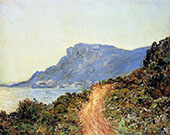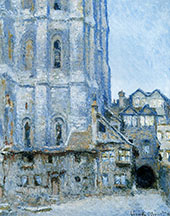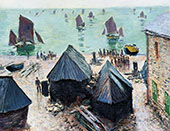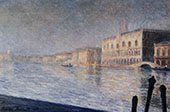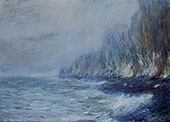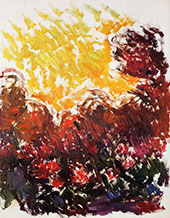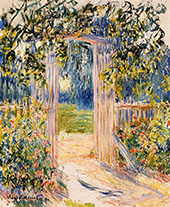Claude Monet Oil Painting Reproductions
Claude Monet replica paintings on Canvas for sale
Famous Impressionist Paintings by Claude Monet.
Claude Monet was a French painter born in November 1840 and considered the founding father of the Impressionist Movement. The world's most famous artist had a long and distinguished career of 80 years. He advocated for the Impressionist principle of en Plein air painting, or creating art outdoors, to accurately depict nature in landscape artworks. Claude Monet's Impression Sunrise, dated 1872, is the artwork that lent its name to the Impressionist Art Movement. Paintings by Claude Monet are held in museums worldwide, while others remain in private ownership. As a result, the artist's oil paintings have realized some of the highest prices ever paid for works of art, and this is particularly true of Monet’s Nympheas or Water Lily paintings.
When Claude Monet art comes to auction, the art world comes alive with dealers and collectors prepared to pay enormous sums.
Where was Claude Monet Born?
Monet was born in Paris, but his parents moved to Le Havre in Normandy when he was 5. His father was a ship-chandler and grocer who wanted Monet to join the family business. Monet, however, wanted to become an artist. So, in 1851, with his mother’s support, he enrolled at the Le Havre Secondary School of Art. During his time at the art school, Monet met Eugene Boudin. Boudin encouraged Monet to paint outside, introducing him to the en Plein air painting technique. The artist later said that Boudin had been his Master and to whom he owed his later success. Monet’s mother died in 1857, and in 1858 he moved to Paris to continue his studies at the Academie Suisse. Here, he met fellow artist Camille Pissarro, who became a lifelong friend.
Monet was called to military service in 1861 and sent to Algeria to fight. He found the intense light and vivid colors influential in Algeria, using the concept in his later oil paintings. In 1863, Monet returned to Paris to continue his studies. Here, he met with his friends, the artists Pierre-Auguste Renoir and Frederic Bazille. Renoir and Alfred Sisley frequently accompanied Claude Monet on trips to Honfleur, where they created landscape paintings of the coastal area. Many of Monet's impressionist paintings come from this early period. For example, Le Dejeuner sur L’herbe 1865 shows the artists Gustav Courbet and Frederic Bazille at a picnic in the woods, together with Monet’s first wife, Camille Doncieux.
Famous Paintings By Claude Monet
During the eight decades of his career, Claude Monet is famous for many oil paintings. However, because Impression Sunrise gave its name to the Impressionist Art Movement, it is considered Monet's most famous painting. Nonetheless, it was mocked during its initial display in 1872 and censured for appearing incomplete and ambiguous. It has since become recognized as a masterpiece among French Impressionist paintings. It is on display at the Musee Marmottan Monet in Paris.
Monet’s Impressionist oil painting The Artists Garden at Giverny, 1900 is another famous Impressionist masterpiece. This landscape oil painting highlights the garden he created at Giverny. It displays rows of pink and purple irises, with his house visible in the background. Monet was 60 when it was painted. The painting demonstrates how Monet is a master of light and shade, with its overhanging trees providing light and shade to the flowers. The original Monet painting is displayed at the Musee d’Orsay in Paris.
Held by the Metropolitan Museum of Art, Poppy Fields near Argenteuil was painted in 1875. It is one of four similar paintings Monet painted in fields on the plain of Gennevilliers, close to his house at Argenteuil. The painting shows two poplar trees on the edge of the poppy field. The artist’s son, Jean, appears in the foreground with the River Seine flowing on the very left of the painting.
Water Lilies by Claude Monet
Monet Water Lilies, or Nympheas paintings as they are also known, number approximately 250. They are all painted from the period 1896 to 1920. Bridge over a Pond of Water Lilies, painted in 1899 at Giverny, is owned by the Metropolitan Museum of Art in New York City. The painting is just one of the many famous Monet paintings of the landscaped gardens in his Giverny home. As Monet gained fame and sold more of his paintings, he purchased additional land and constructed a sizable water lily pond featuring a Japanese bridge. Ultimately, during the summer of 1899, Monet created a series of eighteen portrayals of his lily pond.
Water Lilies, 1916, belongs to the National Museum of Western Art in Tokyo, Japan. It is one of our most popular art reproductions of Monet's water lily paintings. Monet adapted his studio with a large glass wall so that he could paint from the studio, looking out to his garden and lily pond; with his easel on wheels, he could easily move around the Studio. Other famous Monet paintings include Irises and Water Lilies, painted by Monet in 1917, again in his garden in Giverny. This painting is in a private collection.
Where Did Claude Monet Live?
Monet married Camille in 1870. With the onset of the Franco-Prussian war, he went to live in London and Amsterdam. In London, he met with his friend Camille Pissarro and the American painter James Abbott McNeill Whistler. Monet also became friends with the influential art dealer Paul Durand-Ruel, a relationship that became a milestone in his career. In London, Monet admired the paintings he saw by the English landscape artists John Constable and J M W Turner. He was particularly impressed with Turner’s use of light in his paintings of fog on the River Thames. There is no doubt that this feature influenced Monet’s future work and Impressionism Sunrise painting, which was completed two years later. During this period, Monet also created oil paintings featuring the River Thames, Hyde Park, and Green Park in Central London.
In 1871, he moved back to France, settling in Argenteuil, a region located northwest of Paris and near the banks of the Seine River. He bought a boat, converted it into a studio, and secured a long-term rental agreement for a house in Argenteuil. It was then that he first started conceptualizing and creating the garden that would later feature prominently in numerous of his artworks. In 1879, Camille Monet died of uterine cancer in 1789. Monet’s financial position was unstable, and for a while, he moved away from impressionist paintings in favor of more saleable ones. Monet became close to Alice Hoschede, the widow of the retail magnate and art collector Ernst Hoschede. They married in 1892, making their home in Giverny.
Claude Monet Garden at Giverny
Monet’s financial problems eased after trips to the Netherlands and Bordighera on the Italian and French border. His paintings pleased American art collectors, and he enjoyed financial security not previously experienced. Durand-Ruel's increased sales of paintings and improved financial situation enabled Monet to commence work on his Giverny garden. He constructed an additional studio and a greenhouse and hired several gardeners to upkeep and enlarge the gardens. Furthermore, he acquired additional land and brought in plants and waterlilies of hues that were not obtainable within France. Monet enlarged his aquatic garden, also referred to as the Claude Monet Water Lily Pond.
Here at Giverny, Monet began his series of paintings of the same subject, Haystacks, Poplar Trees, and the Cathedral at Rouen, for which he is so famous. These paintings were universally popular and gave Monet financial success and stability. At Giverny, he began his most famous series of impressionist paintings. Claude Monet’s Water Lilies paintings occupied the remaining twenty years of his life. He exhibited the first Japanese Bridge paintings in 1900. In London, he painted 41 oil paintings of Waterloo Bridge, 34 paintings of Charing Cross Bridge, and 19 canvases of the Houses of Parliament.
By 1909, Monet had reached a point of near abstraction in his paintings of water lilies. He exhibited 42 paintings at the Durand-Ruel Gallery; it was a huge success.
What happened to Monet’s eyesight?
Monet’s second wife died in 1911, and his oldest son Jean died in 1914. Around this time, Monet’s cataracts began severely affecting his work and limiting his previously significant output of paintings. He avoided cataract surgery, and in 1922, he received a treatment of drugs to dilate his pupils, providing a short-term benefit. However, in 1923, cataract surgery led to an improvement in his eyesight. With better vision, Monet considered many of his earlier paintings inferior and destroyed them. He began to repaint and retouch the remaining paintings. But with poor eyesight, the colors of these paintings are much brighter than previously seen.
Claude Monet Musee de l’Orangerie
In the 1920s, the French government built a pair of oval rooms so Monet could paint and exhibit his series of 8 Water Lily paintings. Known as The Orangerie, it adjoins the Louvre Museum in Paris. Claude Monet’s water lily pond paintings, known as the Nympheas paintings, were enormous in scale. Although on separate canvasses, they measure two meters high by ninety-one meters in length. Monet was involved in designing the two oval-shaped rooms. At his insistence, the construction includes glass panels. The artist Andrew Masson called The Orangerie Rooms “the Sistine Chapel of Impressionism.”
When Did Claude Monet Die?
Monet died in December 1926 at the age of 86. His grave is in the Giverny Church cemetery, close to his home. Michel Monet, Claude's son, gifted his house and garden, including the water lily pond, to the French Academy of Fine Arts. Despite the popular reception of the water lily paintings in the Orangerie in 1927, Claude Monet’s art garnered little attention for many years after his death.
However, in the 1940s and 1950s, Abstract Expressionists, notably Mark Rothko and Jackson Pollock, began to discover Monet’s large canvasses and semi-abstract compositions. Pop artists like Andy Warhol also observed Monet’s repeated series of paintings, such as the Haystack and London Bridge paintings. Warhol, for example, repeated themes with a series of Marilyn’s, Chairman Mao paintings, and Che Guevara's artworks.
Almost 100 years after his death, Claude Monet's Impressionist paintings set new selling price records. In 2019, auction house Sotheby’s sold Meules 1890, one of the Monet Haystacks paintings, for $110,747,000, a record price for a Claude Monet painting, making it one of the most expensive paintings ever sold.
Impressionist paintings by Claude Monet are some of our most popular art painting reproductions.
Museum quality replica art is 100% hand painted and includes a Money Back Guarantee. International Shipping is Free.
Testimonial from Mirbeau Inn and Spa
Cannot Find What You Are Looking For?
Reproduction Gallery Information
Customer Service
(Send Us A Message)
Tel: (503) 937 2010
Fax: (503) 937 2011


